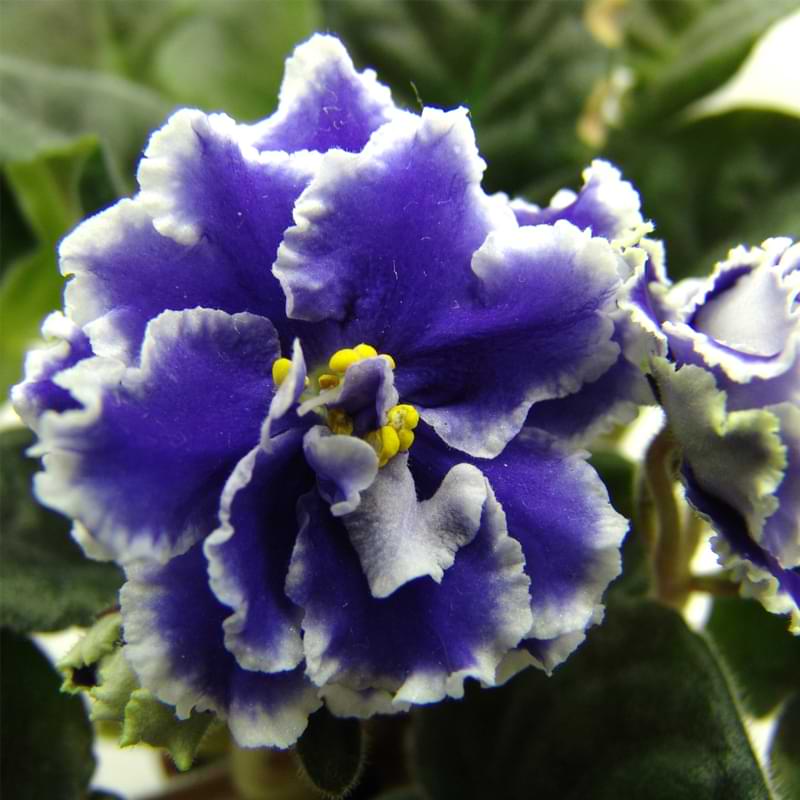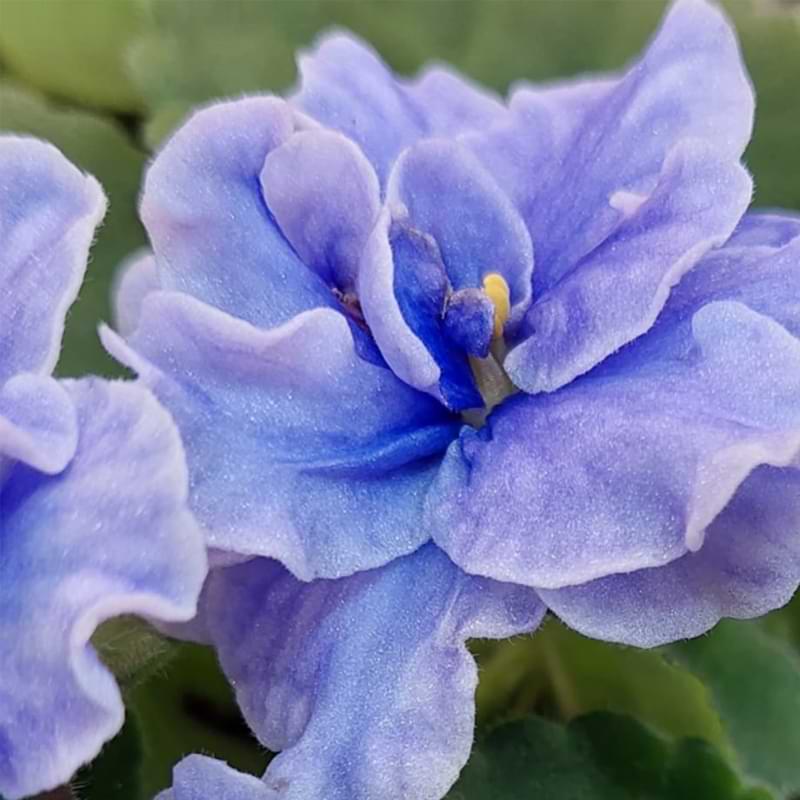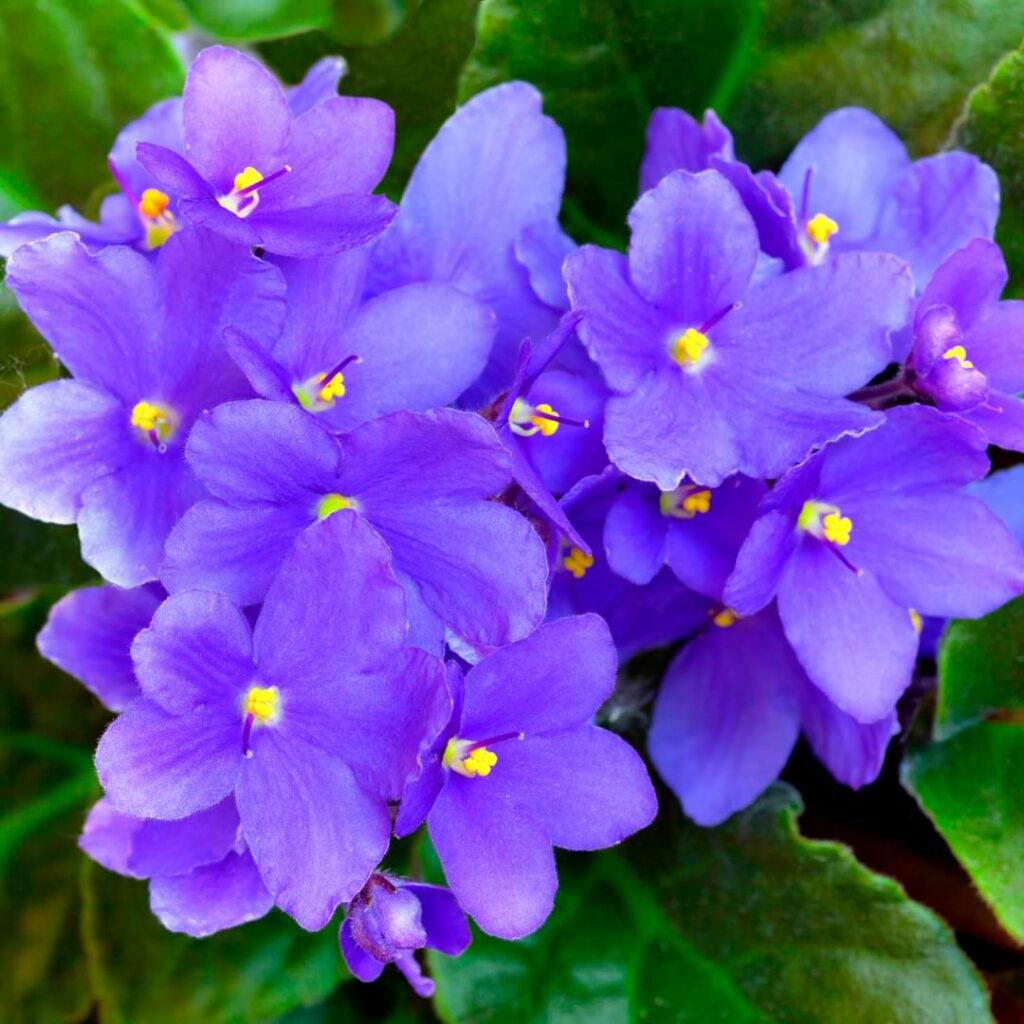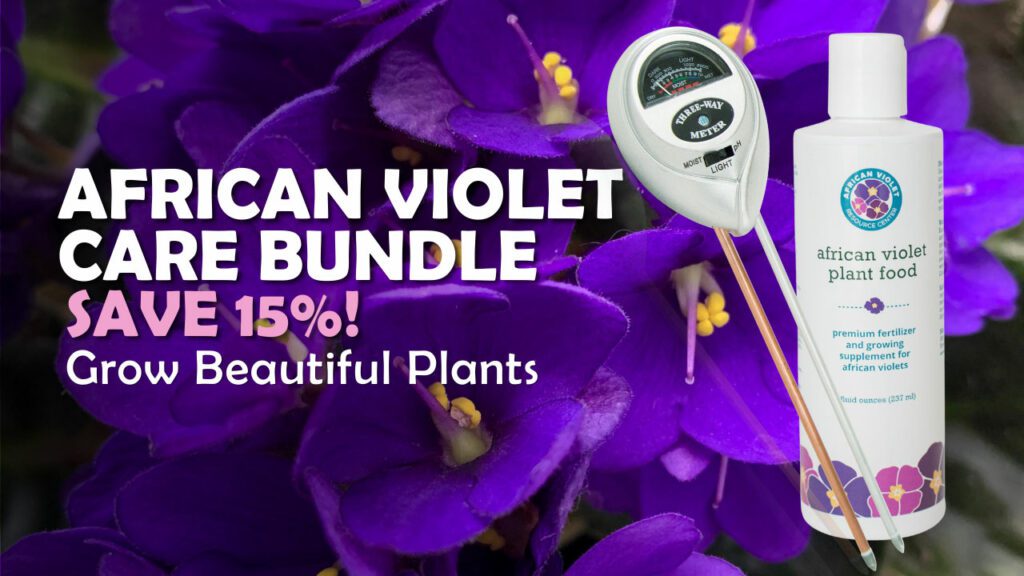African violets are one of the most popular houseplants available. With its wide variety of colors and shapes, it’s no wonder why they’re so beloved! In particular, blue African violets come in an array of shades and sizes that make them stand out from the crowd.
If you’re looking to add some lovely blues to your home or garden, here is a guide to the different types of blue African violets and what makes each unique. From compact varieties to larger plants with deep hues, find out which type will fit into your space best.
Blue African Violet Varieties
There are many different blue African violet varieties to choose from. Here are some of the most popular:
Little Trio
The Little Trio African Violet is a beautiful AV with mostly white flowers, but with a dash of color in the center. They make a beautiful accent and their small size makes them perfect for any side table, center piece, or desk.

Apache Magic
The Apache Magic African Violet is a unique variety, because the flowers are a stunning dark blue with a corrugated edge. This particular variety tends to grow upwards more than other African Violet varieties, making it slightly taller than other varieties of the same width. The leaves of this variety are variegated white, sometimes appearing almost pink.
Blue Wasp
The Blue Wasp African Violet is a beautiful, deep blue flower with yellow spots. It is a very popular type of African Violet, and is often used in bouquets and arrangements. This particular variety grows between 6-12 inches wide and tall, and has a single-bloomed flower.
Harmony’s Little Stinker
This plant gets its name from the Greek word “harmonia,” which means “harmony.” The plant was given this name because of its ability to create a sense of harmony in the garden. It boasts a beautiful semi-double bloomed flower, and the leaves are a muted green with wavy edges. This is a fairly rare variety, because it can only be propagated reliably every now and then. Propagation from a leaf of this variety does not guarantee any of the characteristics of the parent plant will come through in the new plant.
Luminous
The most common type of blue African violet is the Luminous variety. This type of violet is known for its large, bright blue flowers and its ability to bloom all year long. The Luminous variety is also one of the easiest African violets to care for, making it a great choice for beginners. These are more commonly found at online retailers, possibly even at your local garden center.
Radiant
Radiant blue African violets are a type of violet that is known for its vibrant, blue color. While they are not as common as other types of violets, they are still widely available from nurseries and online retailers. Radiant blue African violets typically have large, round leaves and thick stems. The flowers of these violets can range in color from light blue to deep purple.
Ramblin` Lassie
The Ramblin’ Lassie variety has large, blue flowers that are very showy. The leaves are also blue, and they have a ruffled edge. This plant does best in bright light, and it will bloom continuously if given the proper care. This is a fairly fast growing variety, so it requires a larger pot to ensure it doesn’t topple over within the first year or two.
Blue Heaven
This variety has deep blue flowers and dark green leaves. It is a vigorous grower and can reach up to 18 inches in height. The Blue Heaven variety grows at a normal African Violet pace, and will benefit from very regular care. It has very delicate-looking single bloom flowers with dark green leaves.
African Violets with Blue Variegation
African violets with blue variegation are some of the most beautiful and unique plants you can find. The blue coloration is created by a genetic mutation that causes the plant to produce less chlorophyll, which in turn creates a blue pigment in the leaves. These plants are very delicate and have special care requirements, but they make stunning houseplants or gifts for someone special.
DS-Shining Bell
The DS-Shining Bell is a variety of African violet that is characterized by its deep blue color. This variety of African violet is native to the Congo Basin in Africa and was first discovered in the wild in the early 1900s. The DS-Shining Bell is a relatively rare variety of African violet, but it is prized by collectors for its unique color. For this reason, it may seem rather impossible to find one at any local nursery, or even online with African Violet retailers.
LE-Curls of Venus
The LE-curls of Venus African Violet have beautiful, curling petals that make them stand out from other types of flowers in the same family. The variegation on this plant is a deep blue color, and this variety is known for its ability to hold their color even in direct sunlight. They are also very fragrant, making them a popular choice for use in perfumes and colognes. This type of African violet is native to Tanzania, and it is one of the more popular varieties of blue African violets.

K-Heavenly Blue
K-Heavenly Blue is a beautiful blue African violet that is perfect for adding a splash of color to any room. This variety of African violet is known for its large, bright blue flowers and its ability to bloom all year long. The variegation on this flower is along the edge of each petal, creating an almost halo-like appearance that catches many people’s attention.
EK-Roses For Mermaid
EK-Roses For Mermaid is a type of blue African violet that is known for its beautiful rose-like blooms. The flowers of this type of violet are very delicate and they have a sweet fragrance. They are also known to be one of the most popular types of violets in the world.
EC-Rose of the Arctic
The EC-Rose of the Arctic is a beautiful blue African violet that is native to the cold, northern regions of Africa. It also boasts beautiful rose-like blooms. This violet is known for its ability to thrive in cooler temperatures and its pretty blue flowers.
Lonestar
Lonestar is a type of blue African violet that is very popular among violet growers. The blooms of this variety are a deep blue color with white centers. The leaves are slightly darker than the blooms and have a purple hue. This variety is known for being very easy to care for and bloom well under a wide range of conditions.
Humako Sharon
Humako Sharon is a type of blue African violet that is characterized by its white blooms with a singular blue stripe in the center of each petal, coming up from the bloom’s crown to the edge of the petals. It is a native of Africa and has been cultivated for centuries in that region. The Humako Sharon is a popular choice for those looking to add a splash of color to their home or garden.
Rhapsody Lucia
Rhapsody Lucia is a blue African violet that is known for its beautifully unique blue and white flowers. This AV is unique because the blooms have white on one side, and fade to blue on the other side. Each petal seems to fade a little more into the new color, making a stunning and unique piece of art within the flowers. This type of violet is native to the tropical forests of Africa and typically blooms from late spring to early summer.
RS-Call of the Sea
While the vast majority of African violets are blue, there is a small subset of these beautiful plants that are instead a deep, rich purple. These “purple” African violets are actually a variety of Saintpaulia called RS-Call of the Sea, and they’re prized for their stunning color. Nevertheless, the Call of the Sea Variety is considered a blue African Violet because this variety’s color variations can shift from purple to blue. It has beautiful double-bloom flowers with white variegation around the edges of each petal.
Blue African Violet Key Features
Aside from blue flowers, leaves, or variegation, there are some key features that make all blue African Violets unique. Some blue African Violets may require more care than other African Violet varieties, while others are happy to be cared for just as any other AV house plant.
Height and Spread
The average height of a blue African violet is 6-12 inches. However, some varieties can grow up to 24 inches tall. The average spread is 6-8 inches. Blue African violets prefer a moist environment with indirect sunlight.
Seasonality and Lifespan
As with most flowers, African violets bloom according to the seasons. In general, they will bloom from early spring to late summer. The blooming season can be extended by providing the plants with extra light, warmth, and moisture. African violets typically live for three to five years, although some varieties may live for up to ten years or more!
H3 Blooms
All African Violets bloom seasonally, but only when the right conditions are met. African Violets need 8-10 hours of indirect sunlight or more, followed by a minimum of 8 hours of darkness every night in order to trigger blooming. There isn’t much difference here between blue African Violets and all other African Violet varieties. The main difference is the color of the blooms. Blue African Violets can actually be a range of shades between purple and deep blue.
FAQs African Violets
How many colors of African violet are there?
The most popular African violet colors are blue and purple. However, there are also white, pink, and red varieties. There are even some African violets that have multiple colors on their petals.
How do I identify my African violet?
Identifying your African Violet may be rather difficult, but if you take a close look at the plant’s flowers and leaves, you should be able to identify it by comparing it to an African Violet identification guide. Many AV’s have either straight or wavy leaves, single or double blooms, and variegated or non-variegated leaves and blooms. Identifying these characteristics should give you a solid idea of what kind of African Violet you have.
Join the African Violet Club!
Whether you’re just starting out or are a seasoned grower, African Violet Resource Center has everything you need to help your plant grow vibrant and strong. Explore our other articles, visit our online shop, and connect with other houseplant lovers in our Facebook group to learn everything you need to know about this rewarding hobby!
More Great African Violet Resources
The Best Houseplants for Your Environment
Everything You Need to Know About African Violet Leaves
6 Signs Your African Violet Is Dying and How to Revive It
Endless Summer: Here’s How to Grow an African Violet Garden That BLOOMS







